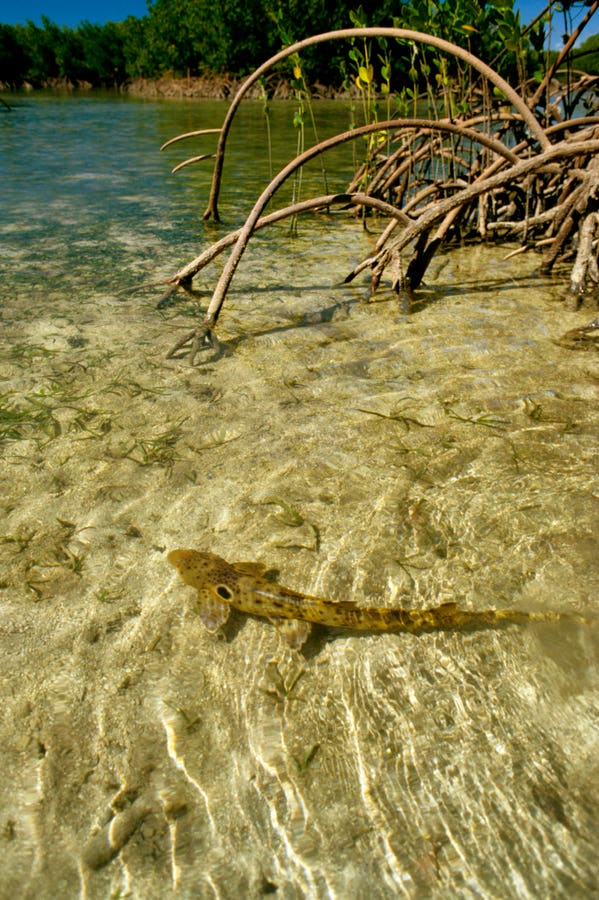Elasmobranchs (which includes sharks, skates, and rays) have thrived for over 450 million years and survived Earth’s most dramatic climate shifts, including the five mass extinction events. Yet, in today’s world of rapidly warming oceans, they face a new and formidable challenge.
Climate change.
A taboo word to some, climate change has brought to light the importance of species’ ability to adapt to changing conditions, either by redistributing to more suitable thermal habitats or by demonstrating phenotypic plasticity and adaptation. The key to understanding this challenge lies in the context of their ecology and mobility, as the degree to which a species can move and adjust to new environments plays a crucial role.
This applies to sharks and their relatives, too. Elasmobranchs range from the elusive tiger shark to the resilient epaulette shark, the versatile blacktip reef shark, and the adaptable Atlantic stingray. With over 1,000 species under the ‘elasmobranch’ label, each creature brings its unique strategies to the table to combat rising temperatures and shifting environments.
Recent research suggest that the ability to redistribute to optimal thermal habitats and exhibit phenotypic plasticity or adaptation is often tied to a species’ ecology, with mobility being a key factor. At the forefront of adaptation is behavioral plasticity, the authors point out. A strategy employed by many elasmobranchs to navigate a changing world, the tiger shark (Galeocerdo cuvier), known for its global distribution throughout tropical and temperate waters, illustrates this beautifully. These majestic creatures choreograph their oceanic movements based on temperature gradients, ensuring that they dwell in conditions close to their thermal optimum. This kind of precision in behavioral thermoregulation allows them to optimize their performance and maintain their preferred body temperatures.
But what if a shark doesn’t undergo the long-distance migrations that tiger sharks do? Well, it doesn’t mean they can’t exhibits behavioral thermoregulation too! The blacktip reef shark (Carcharhinus melanopterus), which prefers shallow coral reefs, is a great example of exhibiting behavioral thermoregulation that aligns with the thermal variability of its surroundings. They optimize their living conditions and maintain a relatively narrow thermal window that suits their specific needs. This adaptation makes these sharks resilient in their native ecosystems, allowing them to find the perfect balance between temperature and performance.
In contrast, species like the epaulette shark (Hemiscyllium ocellatum), which resides in the Great Barrier Reef in Australia, emphasize physiological plasticity as a means of dealing with temperature variations. This remarkable species has acclimated to harsh conditions that include dramatic daily temperature fluctuations. As a result, their physiology exhibits robustness when confronted with low oxygen levels, high carbon dioxide concentrations, and significant thermal fluctuations. This adaptability is key to their survival and helps them maintain performance under rapidly changing conditions.
While some elasmobranchs exhibit behavioral plasticity and others demonstrate physiological plasticity, some species might employ both strategies. These are the sharks and rays that inhabit estuaries and experience wide temperature variations, like the Atlantic stingray (Hypanus sabinus). These animals have a combination of attributes that allow them to thrive in conditions ranging from 33.26°F to 109.4°F (0.7°C to 43°C) and show adaptability not just through their own actions, but also across generations. Pregnant females are known to thermoregulate during gestation to expedite embryonic development, preferring warmer temperatures. However, some individuals seasonally migrate to deeper waters during the winter months, suggesting a degree of behavioral plasticity when required.
So, what mechanisms drive these incredible adaptations in elasmobranchs, allowing them to navigate the warming waters of our planet? The answers lie at various levels of biological organization. At the organismal level, metabolic rates are a central aspect of adaptation. Elasmobranchs adjust their metabolic traits, blood-oxygen carrying capacity, and ability to mitigate reactive oxygen species in response to changing environmental conditions. This fine-tuning of metabolic processes is crucial for survival when faced with warming oceans.
At the cellular level, mitochondria play a pivotal role in the response to temperature stress. Elasmobranchs exhibit modified mitochondrial structures and functions as part of their adaptive strategy. These subtle changes at the cellular level enable them to maintain critical metabolic functions even as their surroundings heat up. Furthermore, gene regulation (at the molecular level) is an essential mechanism underpinning phenotypic plasticity. The ability to upregulate genes related to metabolic functions, stress responses, and immune reactions in response to changing conditions is a powerful tool in adaptation. For elasmobranchs, these genetic responses can help them survive and thrive in the face of environmental stressors.
Despite the significant role elasmobranchs play in marine ecosystems, we know surprisingly little about their responses to climate change, the authors point out. Their long lifespans, limited mobility, and the logistical challenges of studying them have made it difficult to gather comprehensive data. However, with modern technology and innovative research approaches, scientists are beginning to bridge the gap in our understanding of elasmobranchs’ ability to adapt and acclimate. By studying these remarkable creatures, we can gain not only insights into their evolutionary history but also valuable information for conservation efforts and ecosystem management. Elasmobranchs are often hailed as one of the most important custodians of our oceans, and their ability to adapt to a changing climate is not just a matter of survival for them—it is also a key factor in the health of the planet’s most extensive and critical ecosystems. As climate change continues to threaten marine ecosystems, the lessons we learn from these ancient survivors will be invaluable in shaping our future.
Read the full article here





